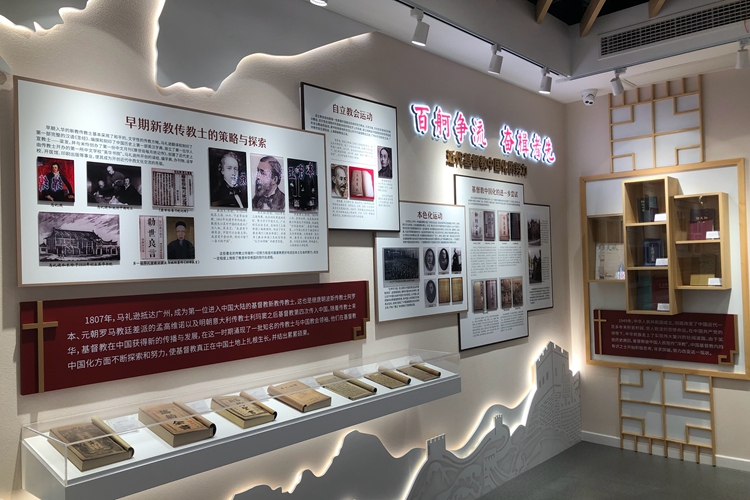Recently, the first physical exhibition hall in Jiangsu Province with the theme of the sinicization of Christianity opened at Wuxi Church. It showcases the integration of Christianity and Chinese culture since the gospel was introduced into China over 1300 years ago in the Tang Dynasty.
In 1901, the Church Mission Society sent President Gouverneur Frank Mosher and Chinese Clerk Zhu Baoyuan to preach in Wuxi. In 1915, a new church named "Holy Cross Church" was built in Wuxi. After Wuxi TSPM was established in 1958, all denominations in Wuxi held joint worship services, and the church was renamed "Wuxi Church".
The exhibition was organized into four parts. The first part delved into the historical development of the sinicization of Christianity, including Nestorianism, which quoted classical texts from Buddhism and Taoism during the Tang Dynasty, as well as the Mongolian translation of scriptures by Arcaoun in the Yuan Dynasty. In addition, it explored the interactions and collisions between Catholicism and Confucian culture during the Ming and Qing dynasties. For example, Matteo Ricci used Confucianism to interpret Christianity; the Chinese Rites controversy took place; and the Qing state banned the religion for one hundred years.
The second part introduces the exploration of sinicization by well-known missionaries and Chinese church leaders in modern times. The commentator mentioned the first Protestant missionary to China, Robert Morrison, who translated the entire Bible into the Chinese language with the distribution of the Scriptures and compiled and printed the first English-Chinese dictionary in Chinese history. He also ordained the first Chinese pastor, Liang Fa, founded the first Chinese monthly magazine Chinese Monthly Magazine and created the first Chinese school, "Ying Wa College," run by missionaries in modern history.
Additionally, Chinese church leaders continued to establish "Three-Self" churches and carry out indigenization movements. Local churches originally associated with foreign missionary societies became self-supporting churches composed purely of Chinese Christians and pastors.
This exhibit also showed the attempts made by the Chinese church in terms of indigenization, such as translating theological masterpieces, building churches with Chinese characteristics, and singing hymns with national tunes.
The third part then demonstrated the results of the sinicization of Christianity since the Three-Self Movement was launched, including the exploration activities in theological education, hymns, theological thought, and social services. CCC&TSPM established the Chinese Christian Hymns Committee and the social service department and published CCC&TSPM's flag magazine, Tianfeng, an anthology of Chinese theologians, and gazetteers of seminaries across China in collaboration with seminaries and related organizations.
The fourth part introduced the practices of the Wuxi Church in promoting Christianity in the Chinese context and participating in public welfare and charity activities.
In addition to pictures and texts, commentaries were given by pastoral staff, volunteers, and some highly educated individuals from the church.
Senior Pastor Yan Zheng stated that Chinese Bible translation was the sinicization of Christianity in language, and that sinicization was for better evangelism. He emphasized that, in addition to exhibiting the progress of the contextualization of Christianity in China, churches should tell the stories of Chinese believers themselves.
Believers can visit this hall at the regular time after the morning and afternoon services every Sunday.
- Translated by Abigail Wu












